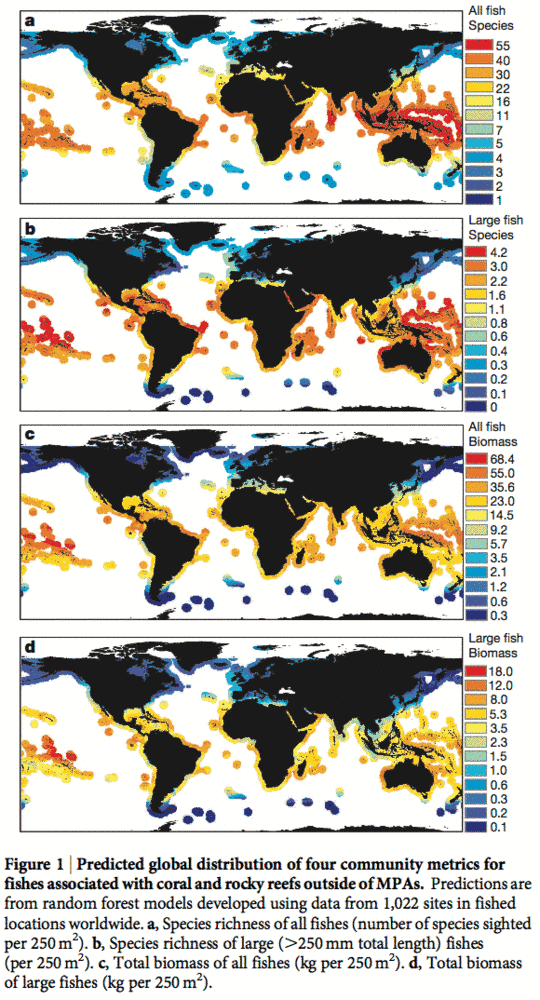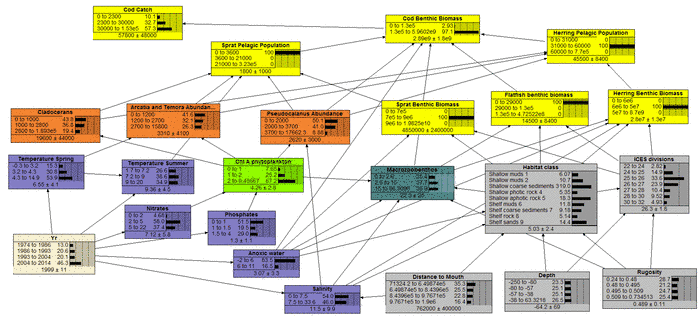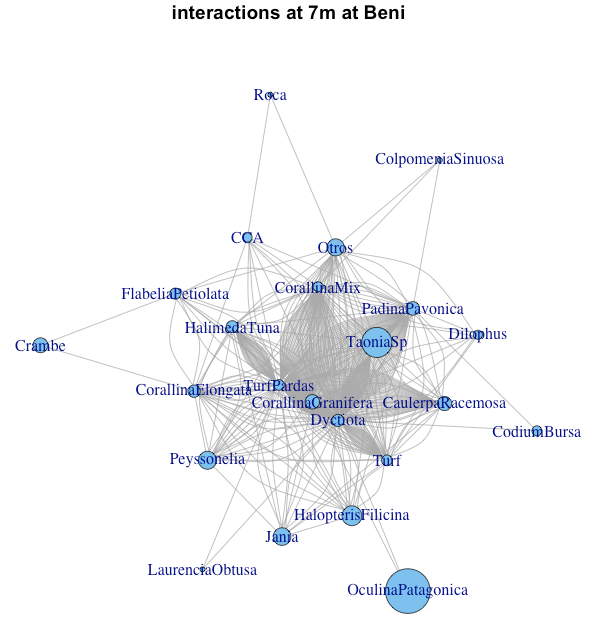Coral Reef Ecology and Management
Subline: Spatial and temporal dynamics of coral reefs and their socio-ecological management.
With the ever-increasing plight of coral reefs across the globe the linkage between ecosystem function and people dynamics becomes even more important to understand. Global research has tended to focus on the impact from coupling the terrestrial and coastal systems together with scant regard to impacts at a pelagic or social level. Funding has been directed at this focus partly due to the inherent ability to ´fix´ past mistakes with land use amelioration and partly due to the obvious devastation of coastal environments. However the factors that contribute to the coral reef health are now generally understood and the issues confronting conservation ecology tend to be more anthropogenically focused. Stockholm Resilience Centre has in particular led this emergence of a holistic approach to sustainable management although much work and research remains to be completed in order to establish a robust future. The larger scale coupling of pelagic processes, such as trophic dynamics, with coastal processes remains elusive. Even in enclosed systems, the marine management continues to partition the research questions into coastal OR pelagic divisions. The research goal here is to bring the two systems into one through a coupling of multi scale processes and dynamics.
There are three objectives as part of this research goal.
- The first objective is to develop coral reef ecology as a holistic discipline that encompasses holobionts, social systems and large scale trophic dynamics.
- The second objective is to develop training of researchers with advanced skills and understanding that can progress the field of coral reef ecology.
- Lastly the final objective is to leverage the unique position that the University of South Pacific holds with increased recognition of the research capacity into Pacific Ocean marine ecology and management.
To achieve this goal the plan is to address 4 projects. These are:
- Understanding local scale processes of benthic ecology to regional scale processes such as environmental and geomorphological variation,
- Develop models that couple pelagic systems to coral reef dynamics,
- Developing knowledge of fine scale processes such as habitat complexity as a function of recruitment, and
- Disentangling the drivers associated with anthropogenic exploitation patterns of marine systems.
Each of these projects will necessarily be collaborative with scientists across the globe. The research directions outlined would involve a mix of field based data collection and computer modeling.
Research team:
Dr. Stuart Kininmonth, Senior Lecturer, stuart@kininmonth.com.au
Post Docs
Dr. Amanda Ford. Amanda will use MPA-selection optimization methods to identify efficient MPA networks that will maximize the representation of regional genetic diversity and use from fisheries as cost while maintaining connectivity. She will predict locations of new MPAs that help to secure the amount of genetic diversity and contribute to fisheries. The location and specification of new MPAs (up to 10% of protected sites defined by the CBD) will form the basis for negotiations towards sustainable artisanal fisheries discussed in a workshop with decision makers and other stakeholders and published in a scientific journal.
Doctoral candidates
Ronal Lal
Title: Building coral resilience and improving coral restoration effectiveness in the Fiji Islands though assisted evolution
Siosaia Vaihola
Title: Tuna fisheries management in a remote sensing environment
Linieta Tokalauvere
Title: “Spectral signatures of Mangroves and management of this information for resilient development in Fiji”
Masters candidates
Lisa Goberdhan
Title: The Skeleton Key: Porites Skeletons Provide a Key Link Between Coral Bleaching and Water Quality
Laitia Tamata
Title: The Value of Data-Poor Fisheries Management Approach in Fiji’s Inshore Fisheries
Therese Fett, Secondary ZMT
Title: “The occurrence and role of mangrove trees on back reef habitats”
Hannah von Hammerstein, ZMT
Title: ”The occurrence and role of mangrove trees on back reef habitats”
Post graduate candidates (400 level)
George Naboutuiloma
Title: Coral biodiversity: a study of Tivua Island reef system
Ana Sereilagi
Title: Intraspecific variation of Acropora sp. tolerance level to a pollutant (washing machine water)
Ulamila Matairakula
Title: Measuring and Comparing the Coral Health in the Marine Protected Area of Navakavu and the Non-Marine Protected Area of Suva Notch.
Tarau Taga
Title: Macroplastic Impact on Acropora millepora coral colony health
Rosemary Dautei,
Title: Impact of the seasonal ban of Epinephelidae species on coastal communities in Fiji
Tyler-Rae Chung
Title: Coral branch shape dimensions in coral colony growth pattern
Alisi Rabukawaqa
Title: Monitoring the marine environment with cultural sensitivity in Fiji
Project 1: Local scale processes
While many research projects have tackled the measurement of local diversity and abundance on marine benthic assemblages through in situ surveys, few have expanded to a global scale with capacity to extrapolate to a continental scale. The Reef Life Survey program has surveyed fish and benthic populations across the globe and consequently has generated enough empirical evidence to tackle important questions facing the marine research community. These questions relate to assemblages of diversity (Stuart-Smith et al, 2013 Nature), environmental tolerances of marine communities (Stuart-Smith et al, 2015 Nature), effectiveness of marine reserves for conservation (Edgar et al. 2014 Nature; Figure 2), trophic assemblages altered by fisheries exploitation (Soler et al. 2015 Plos One) and latitudinal gradients of marine diversity (Edgar et al. in review, Science). However the sampling has been biased towards Australasia since the program originated at the University of Tasmania and there are critical gaps within central Pacific ecosystems. This project will continue sampling (using a variety of methods) in these regions within the Global Coral Reef Monitoring Network and thus provide a solid foundation for linking benthic ecology across the Pacific Ocean. The data collected will inform models of coral reef dynamics and socio-ecological relationships.

Project 2: Pelagic & Benthic coupling
This research is heavily orientated towards sophisticated computer models that are based on field and laboratory data. The main focus is to expand on the probabilistic linkages used to model the complex interactions between environment, geomorphology, trophic dynamics and anthropogenic exploitation. For example 41 years of environmental and social data for the Baltic Sea fisheries (Kininmonth et al. (in review) Fish and Fisheries) was spatially explicit, and used to inform a Bayesian Belief Network (figure 2). In this project the regime shifts were evident and the links to social aspects were described. While the environmental aspects are robust the social data was comparatively weak and this has limited the capacity of the model to disentangle the social drivers. However the powerful capacity to describe the non-stationary approach to fisheries management starts to tease apart the linkages between environmental conditions and social interactions. Clearly the use of Bayesian models can also incorporate a wide variety of additional data sources such as agent based and graph theoretic metrics and as such has the capacity to be a valid diagnostic tool. The plan is to continue with this modeling framework for the Pacific Ocean to couple pelagic and benthic systems.

Figure 2: Bayesian Belief network model of the Baltic Sea marine system. The various components are highlighted in different colors; structural (grey), environmental (purple), zooplankton (orange), Phytoplankton (green) zoo benthos (dark green) and fish (yellow).
Project 3: Fine Scale processes
While many surveys acknowledge the interactions present between the observed organisms there is an absence of detailed interaction studies at the community level. Using species identification at a centimeter level along 50 metre transects at multiple locations and at numerous depths a rich dataset of benthic settlement patterns can be assembled (Reefs in Spain example;figure 3). Remarkably the levels of associations that are revealed detail the hidden processes that partially determine the ecology of benthic ecology. Certain species are strongly observed in triads (3 way triangle) where two other species are combined. The plan is to continue to extend this data set across phyla and space and to investigate the scales at which these associations prevail. For this modelling the project will mainly use graph theoretic techniques with a long-term goal of developing a probabilistic model of benthic habitat succession. The implications of individual species preferences towards the regional scale processes especially the responses to environmental gradients are significant and often overlooked.

Figure 3: Graph theoretical model of the interaction between reef species along a 50m transect at 7m depth at the Beni site in Spain. The lines represent neighboring settlement between 2 individuals (circles). The circle size represents the mean diameter size of the species.
Project 4: Disentangling anthropogenic drivers
To establish the foundations required for maximizing the impact of ecological research it is necessary to understand human interactions within both human organizations and associated environment. Assisting social-economic researchers with marine and freshwater applications provides a solid foundation for both research funding security and societal impact. Models of social interactions that impact on freshwater systems in Sweden (Kininmonth et al 2015 AMBIO) and Uganda (Kininmonth et al. 2017 Ecology and Society) and highlight the need to understand the drivers that compel fishers to over exploit their resources. In many cases conservation will rely on the traditional fishing practices combined with exclusion of human activity in key marine locations in order to provide a holistic approach to marine management. Being part of the French-based Biodiversa grant RESERVEBENEFIT will involve modelling optimal reserve configurations based on fisher interviews, larval supply networks and genetic population modeling in the Mediterranean Sea. This research highlights the necessary application of high-level models with empirical data and social systems. This project will continue to engage with socio-ecological researchers at both a practical and theoretical level to develop and apply advanced socio-ecological models to regional situations.